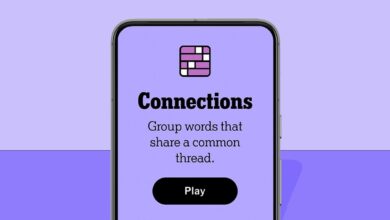The Future of Healthcare Education: VR Medical Training Explained
In the digital era where all fields have adopted innovative technologies, how could the healthcare industry be left behind? With the introduction of VR medical training, healthcare professionals are changing the way, we train the healthcare professionals of tomorrow.
But how?
In this blog, we will delve into the various applications of VR in medical education, focusing on its potential to revolutionize training for the next generation of healthcare professionals.
Virtual Reality in Healthcare
Before looking at its applications, it’s essential to distinguish virtual reality technology’s role in medicine from its entertainment applications.
VR in healthcare doesn’t mean to replace the human touch but rather it is the immersive technology that adds a new dimension to patient communication and care. From training new doctors to providing mental health interventions, the applications of VR are expanding, forging new ways to integrate human expertise with technological advancements.
Have A Look: Introducing Baby Toothpaste: A Parent’s Guide
Virtual Reality in Healthcare Education
Immersive Learning Experience
Medical individuals are responsible for saving lives. For this, they need to possess a comprehensive knowledge of the different organ systems of the human body.
With the traditional educational approach, students have to learn about the intricacies of the human body through 2D models in textbooks and lectures. But, these 2D models make it hard for the students to learn about them in detail. Thanks to the virtual reality technology that offers an immersive learning experience to the students.
Students can now step into realistic 3D environments that replicate medical settings, allowing them to interact with virtual patients, medical equipment, and procedures. This immersion enhances the understanding of complex medical concepts and fosters a deeper connection with the learning material, making them better doctors.
Moreover, virtual reality training goes beyond traditional classroom lectures by simulating real-life medical scenarios. From virtual emergency room situations to practising surgical procedures on virtual patients, students can practice and master their skills in a risk-free environment.
This immersive learning experience not only boosts confidence in students but also prepares them for the unpredictable nature of healthcare settings.
Have A Look: Second Derivative Test – Explanation, Usefulness, Examples, Application, FAQs
Repetition without Risks
Remember the saying- Practice makes a man perfect?
Well, this fits perfectly in the medical field. For a person to be a better doctor, he must perform surgeries on patients repeatedly. However, this is not possible in a traditional setup for multiple reasons like patient availability and risk associated with the surgical procedures.
Conversely, with VR for surgery training, this is possible.
Virtual reality solutions for medical education allow students to perform surgical procedures repeatedly in different scenarios as many times as needed without any risk to real patients. This repetitive practice contributes to the development of muscle memory and proficiency. Thus, ensuring that students enter clinical settings well-prepared for future challenges.
Have A Look: How Old Is Travis Kelce And Taylor Swift?
Enhanced Spatial Understanding
When it comes to medical training, spatial understanding of the subject matter is extremely important. But, the traditional medical education approach doesn’t prepare the budding students in this context.
So, what is the solution?
It is virtual reality technology for sure. VR for medical education offers a 3-dimensional view to the students, enhancing spatial awareness which is a fundamental skill for tasks such as surgery and anatomy exploration.
By wearing a VR headset, learners have the ability to manipulate virtual objects and dissect anatomical structures within a few clicks. They can hone their abilities to a precise level, not achievable through textbooks and lectures alone.
Have A Look: Jimmy buffett net worth, lifestyle and updates in 2024
Collaborative Learning
This might seem a light task, but it holds its share of importance in terms of medical training.
With virtual reality, students can engage with peers and instructors in virtual environments, leading to collaborative learning experiences. This fosters teamwork, communication, and problem-solving skills, vital components of a successful healthcare team. The ability to collaborate virtually also opens up new possibilities for distance learning and global collaboration among healthcare professionals.
Patient Interaction and Communication Skills
Effective communication with patients is a cornerstone of healthcare.
With VR students are allowed to practice patient interactions in a realistic and controlled environment. From delivering difficult diagnoses to obtaining medical histories, students can refine their communication skills, ensuring compassionate and effective care of the patients.
Have A Look: is belize safe to visit?
Future Landscape of VR in Healthcare Education
So, what would the future of healthcare education look like with the integration of virtual reality technology?
Here is what we can expect from VR for medical education in the coming future-
Personalized Learning Paths– VR has opened the door to personalized learning experiences. As this immersive technology evolves, medical education can move away from one-size-fits-all approaches. Students can tailor their learning paths, focusing on areas where they need more practice or exploring specialized fields in greater detail.
Continuous Professional Development– Beyond medical school, VR offers opportunities for continuous professional development. Healthcare professionals can engage in virtual conferences, workshops, and simulations to stay updated on the latest advancements and refresh their skills throughout their careers.
Global Accessibility– VR has the potential to democratize medical education by making it more accessible globally. Remote and underserved areas can benefit from high-quality training without the need for physical infrastructure. This can help address disparities in healthcare education and improve the overall quality of healthcare around the world.
Have A Look: is super travel legit
Conclusion
To conclude, the emergence of innovative technologies like virtual reality in medical education has created a new path of healthcare training. The immersive and interactive nature of VR technology enhances learning along addresses longstanding challenges in traditional medical education.
We can say that the future of healthcare is optimistic with ongoing advancements in technology, increased acceptance, and a commitment to overcoming challenges.
Is your institution ready for this future?
Author Bio:
Emily Brown is a skilled content writer who has made a name for herself in the market’s cosmetics and whitening makeup sectors. Emily, who has a journalism degree and a strong interest in skin lightening cream for private areas and skincare, produces exciting and educational articles. She aims to demystify the beauty industry by providing helpful guidance and product suggestions that appeal to many consumers. Emily’s work is popular among beauty fans because of her accessible and innovative writing style. She enjoys posting beauty tips on social media and trying out new cosmetics in her spare time.



